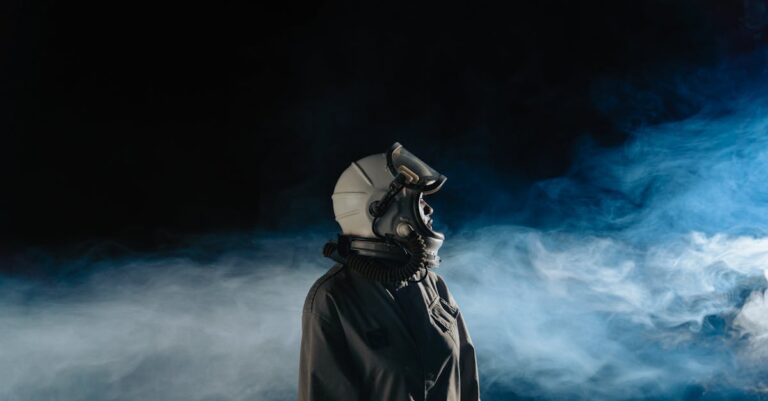
## The Algorithmic Bloom
The rain tasted like iron. Not a metallic tang, exactly, but a memory of it – the damp chill clinging to unearthed shovels in my grandfather’s garden. I licked my lips, ignoring the grimace that tightened my face. The city shimmered under a sodium-yellow haze, slick with the runoff from relentless downpours. This wasn’t weather; it felt like a system error.
My name is Elara Vance, and I sift through the fallout of other people’s meticulously crafted lives. I’m a Bio-Harmonist, which is a fancy way of saying I clean up messes born from obsession. Usually, the mess involves expensive supplements, failed bio-scans and a significant amount of shattered self-esteem. Today’s client: Julian Thorne, tech mogul, purveyor of bespoke realities and owner of a lifestyle built on algorithms.
The Thorne estate loomed—a brutalist monolith swallowed by a manicured wilderness of genetically modified flora. No welcoming lights, just the cold gleam of security cameras tracking my every move. My appointment wasn’t with Julian, but with his chief harmonizer, a brittle woman named Ingrid.
“You’re Vance?” she asked, her voice sharp enough to cut glass. Her eyes, magnified by heavy lenses, scanned my profile – a brief flicker of something unreadable crossing her face.
“That’s right,” I said, hoisting my bag onto a reclaimed oak table in her minimalist office. The air smelled faintly of ozone and something vaguely floral, like a laboratory attempting to replicate a meadow.
“He’s… unstable,” she stated, not asking if I knew. “The protocols haven’t held.”
“What protocols?”
Ingrid gestured to a wall-sized display showing pulsating graphs and cascading code. “The Thorne Bloom. Julian designed it to optimize his entire being, from gut biome to facial aesthetics. AR instructions for ancestral cooking, personalized Vitamin D algorithms… the works.”
“And it backfired?”
“He’s convinced his microbiome is plotting against him. He sees faces in the fermented kimchi. Claims the red lipstick palette is a communist conspiracy.”
I raised an eyebrow. “Sounds… stressful.”
“Stress resilience was integrated, ironically,” Ingrid said, a hint of cynicism coloring her tone. “It’s not working.”
The apartment was unsettling. Thorne’s personalized haven resembled an interactive museum dedicated to his own self-improvement journey. Walls displayed holographic projections of ancestral cooking techniques, overlaid with real-time biome analysis derived from his latest stool sample. VR headsets promised immersive lymphatic drainage workouts. Kitchen appliances hummed with the precision of surgical instruments, preparing meals dictated by his gut flora’s latest whims.
Thorne himself was a study in controlled chaos. Pale, with eyes that darted nervously, he paced the expanse of his living room in a silk robe embroidered with intricate fractal patterns. He clutched a half-eaten bowl of fermented vegetables, his face contorted in disgust.
“They’re watching me,” he muttered, eyes fixed on a jar of kimchi. “Communicating through the lacto-bacillus.”
“Mr. Thorne,” I said, keeping my voice calm and steady. “Let’s talk about how we can rebalance things.”
He flinched, as if I’d spoken too loudly. “Balance? They seek to disrupt it! They’re manipulating my financial cryptography transactions, turning my sustainable furniture builds into weapons!”
“Your gut bacteria aren’t capable of hacking your financial system, sir,” I said gently. “Let’s focus on the present. Tell me about yesterday.”
He described a day consumed by paranoia. He’s convinced the augmented reality instructions for sourdough bread triggered visions of ancient Sumerian deities. The personalized vitamin D dosage recommendations felt like a subtle form of mind control. He’s started building barricades from reclaimed wood, convinced the lymphatic drainage exercises were designed to weaken him.
“The red lipstick,” he continued, his voice trembling, “it shifts. It mocks me.”
I studied him, cataloging the details: hyper-vigilance, delusional thinking, a profound disconnect from reality. Thorne’s ambition had outstripped his ability to process its consequences. He’s chased optimization so relentlessly that he’s lost sight of the fundamental human need for imperfection.
“Let’s create some distance from all this,” I suggested, gesturing to the room’s technological tapestry. “Let’s go outside.”
He recoiled as if I suggested stepping into a toxic zone. “Outside? The urban redevelopment ecosystems… they’re watching too! They track my movements, analyze my data…”
“Just for a few minutes,” I persisted. “Fresh air. Sunshine.”
He hesitated, his eyes filled with a desperate need for something real, even if he didn’t know what it was.
The rain had stopped. A sliver of sun broke through the oppressive cloud cover, illuminating a patch of manicured lawn dotted with genetically modified wildflowers. I led him to it, encouraging him to simply stand there, feel the ground beneath his feet, breathe.
He resisted at first, his body stiff with tension. But as I guided him through a simple breathing exercise, something shifted. The panic didn’t vanish entirely, but it subsided slightly, like a wave receding from the shore.
“Tell me,” I said softly, “what do you *feel* right now?”
He closed his eyes. “Dirt,” he whispered, a flicker of something genuine in his voice. “It smells like… earth.”
I smiled subtly. It wasn’s a cure, not by any stretch of the imagination, but it was a starting point. A tiny crack in the fortress he’s built around himself.
Over the next few days, I worked with Thorne, slowly dismantling his meticulously constructed reality. We didn’t erase the technology entirely; that wasn’t my goal. Instead, we recalibrated it. We introduced elements of randomness, embracing imperfections. We replaced the algorithmic precision with intuitive exploration. I encouraged him to cook without AR instructions, to choose a lipstick color purely based on how it made him feel, not on biome compatibility.
“Imagine,” I told him, “what if a little chaos is… good?”
Slowly, tentatively, he started to experiment. He abandoned the barricades and began sketching designs for a community garden using reclaimed materials. He started listening to music again, not the curated playlists optimized for brainwave synchronization, but old jazz records he found in a dusty box. He even smiled—a genuine, unguarded smile—when I accidentally sprinkled flour on his face while attempting to bake a loaf of sourdough bread.
One afternoon, he found me studying the plant-based fermentation cycles displayed on a holographic wall panel.
“It’s… beautiful,” he said, his voice soft with wonder. “The way they transform. The randomness… it’s life.”
He picked up a jar of kimchi, studying its bubbling surface with a newfound curiosity. He didn’t see faces. He saw transformation. The vibrant colors, the complex aromas – a testament to nature’s ingenuity.
“It’s not plotting against me, is it?” he asked, a hint of amusement coloring his voice.
“It’s just… fermenting,” I said, smiling back.
Ingrid approached me as I was packing my things on the final day. “He’s… calmer,” she said, her voice devoid of its usual sharpness. “Thank you.”
“He still has a long way to go,” I said. “But he’s on the right path.”
As I left the Thorne estate, a thought struck me. Maybe obsession wasn’s about control; it was about searching for something missing. Something that could only be found in the cracks, the imperfections, the unpredictable bloom of life itself. The rain started again, a gentle shower washing away the remnants of Thorne’s algorithmic delusion.
This time, it tasted like hope.


